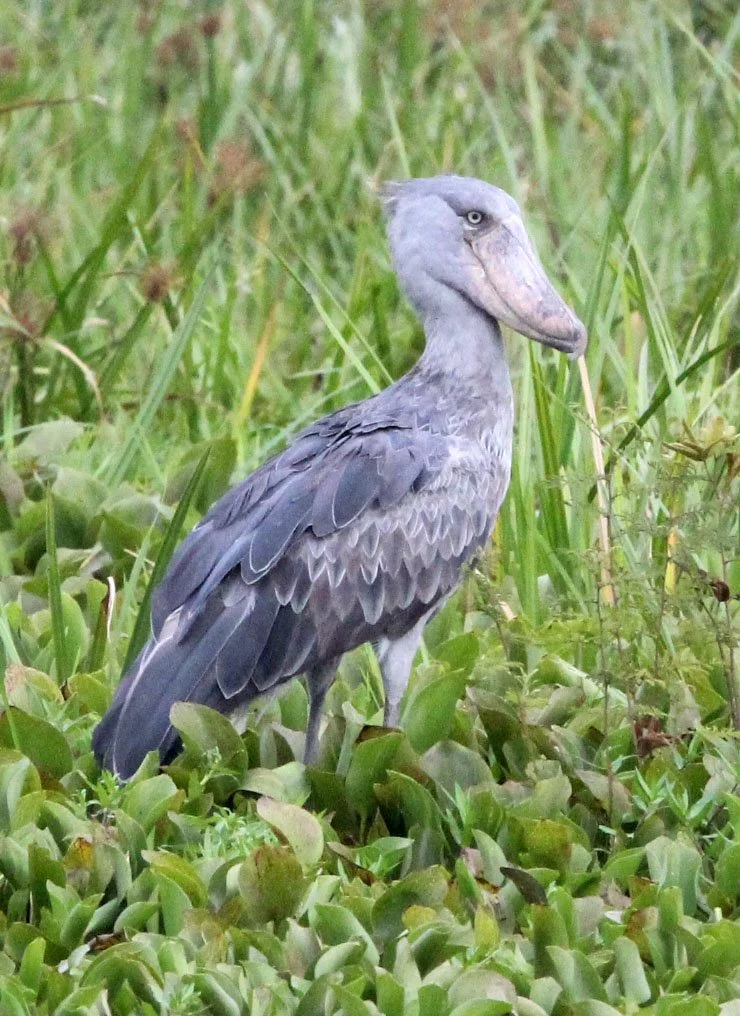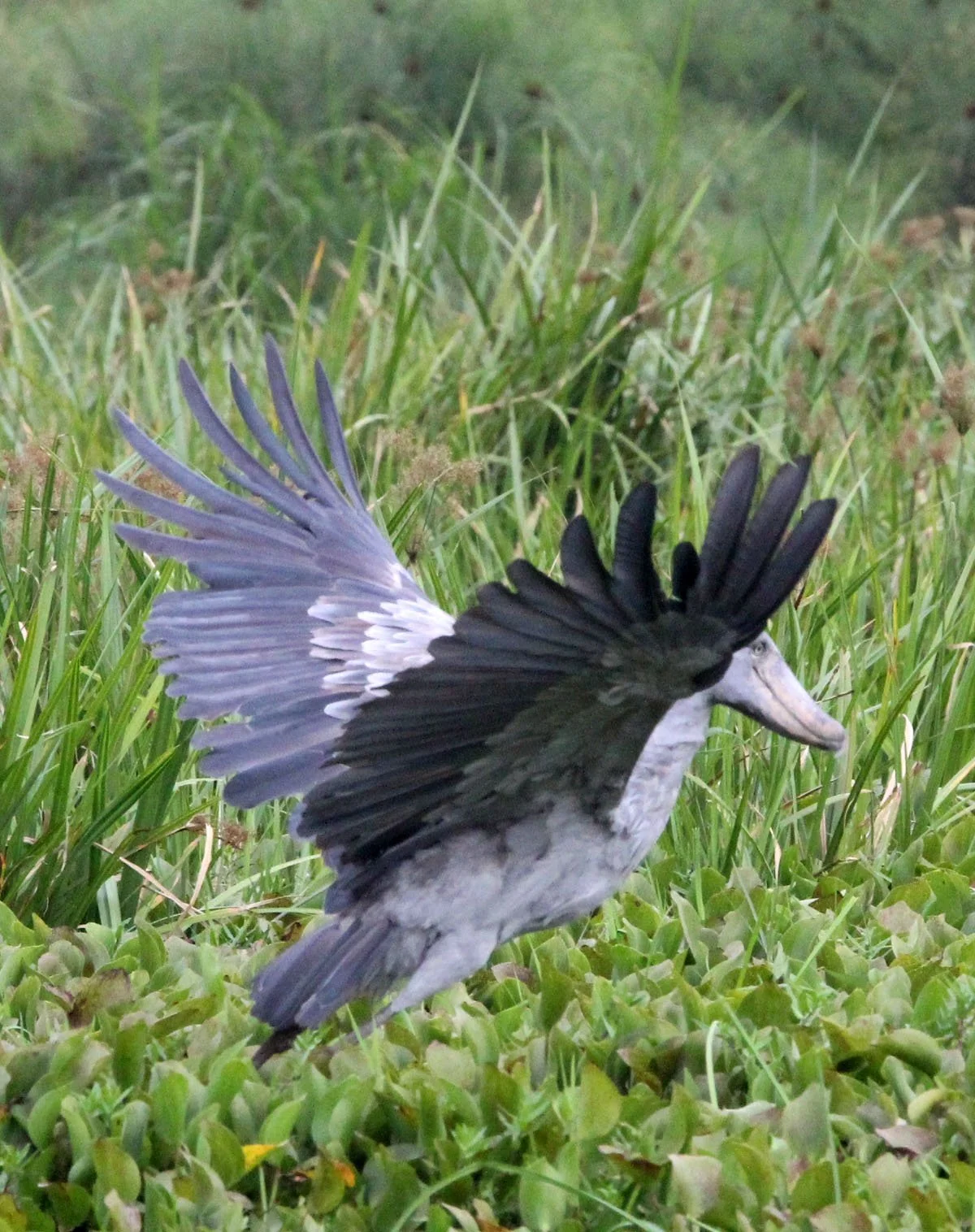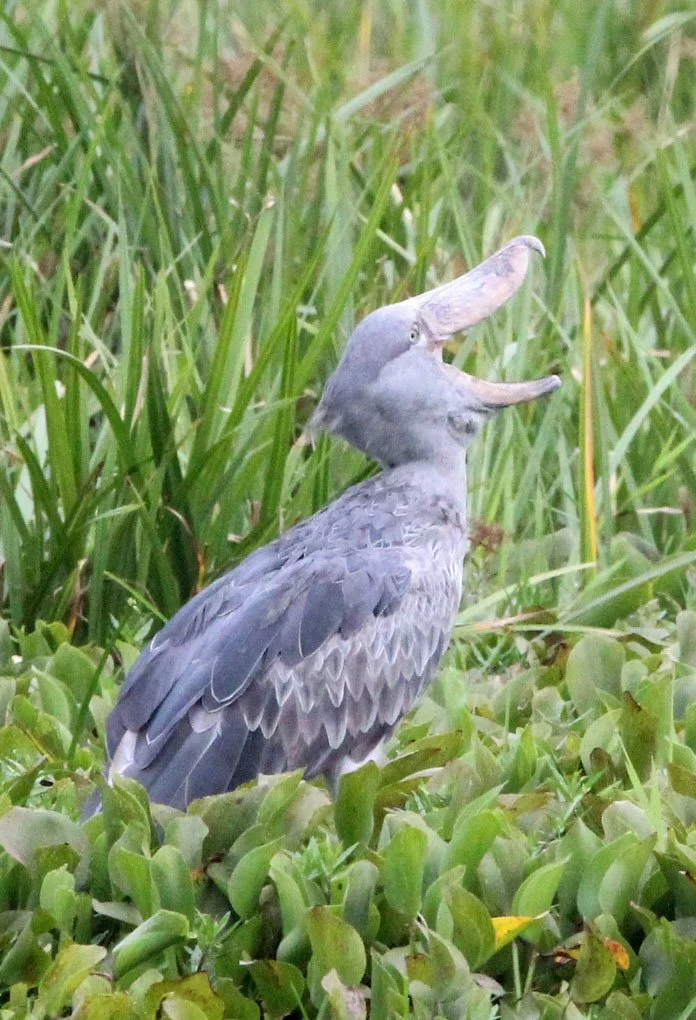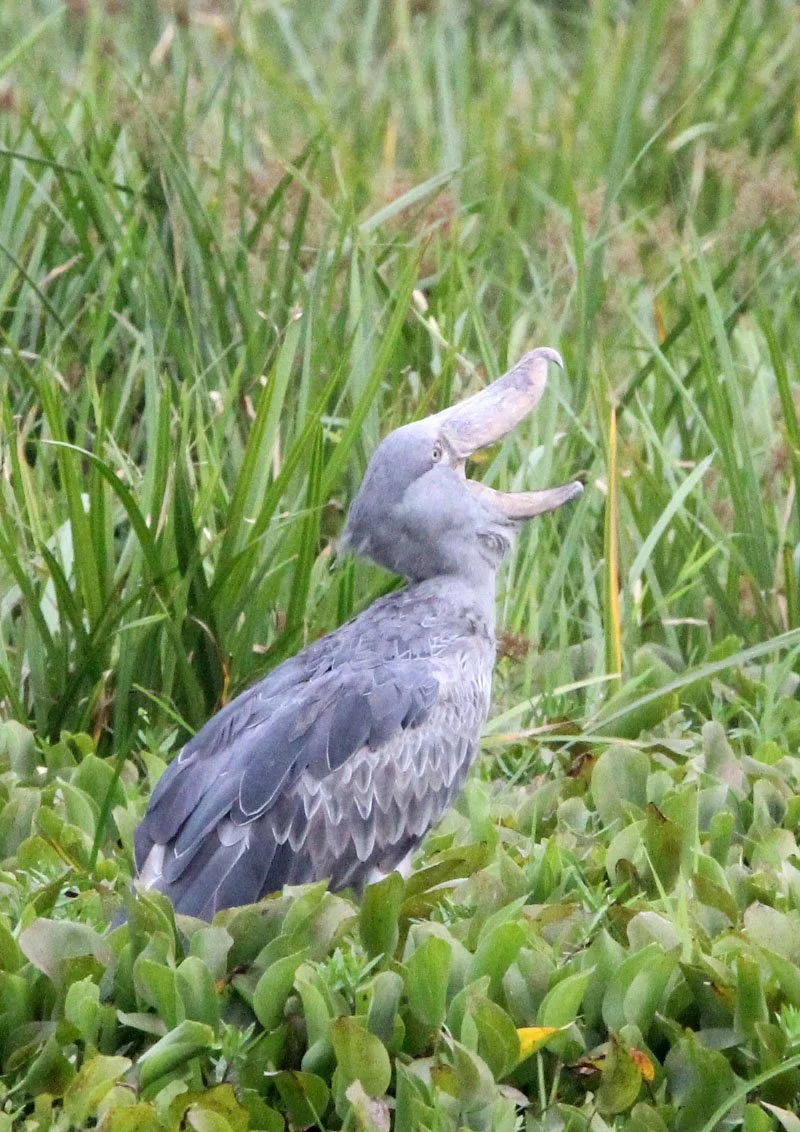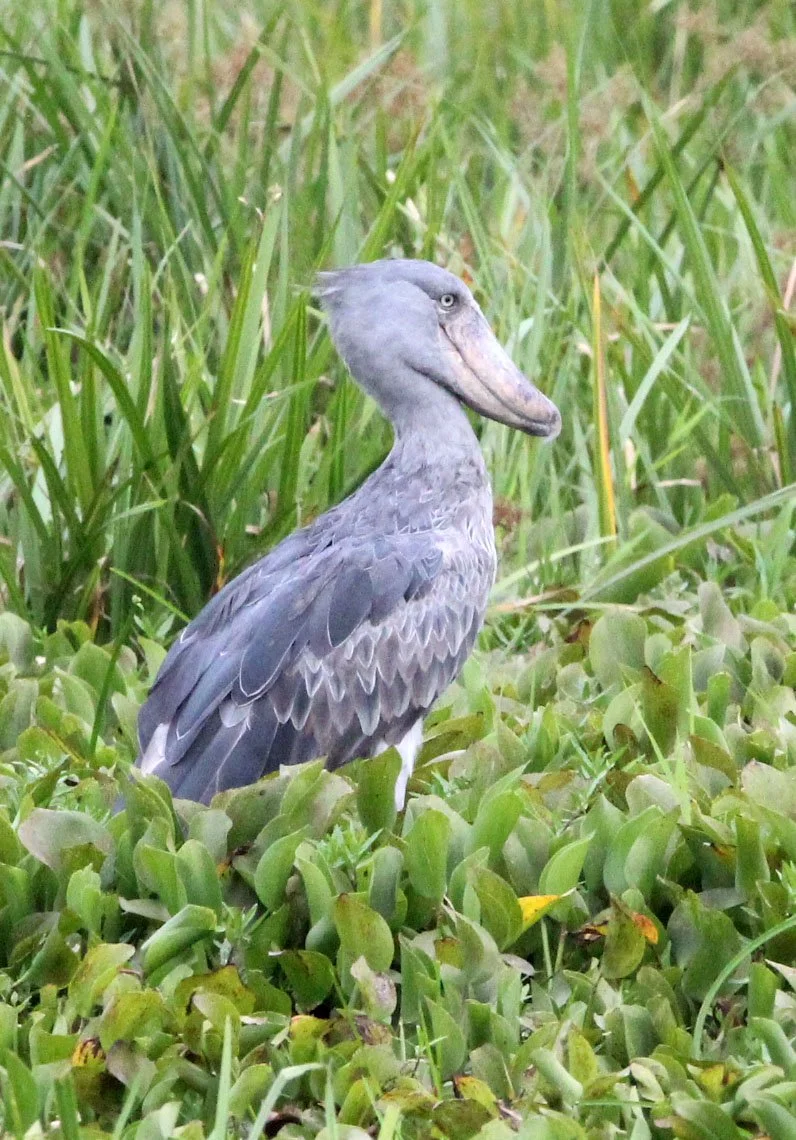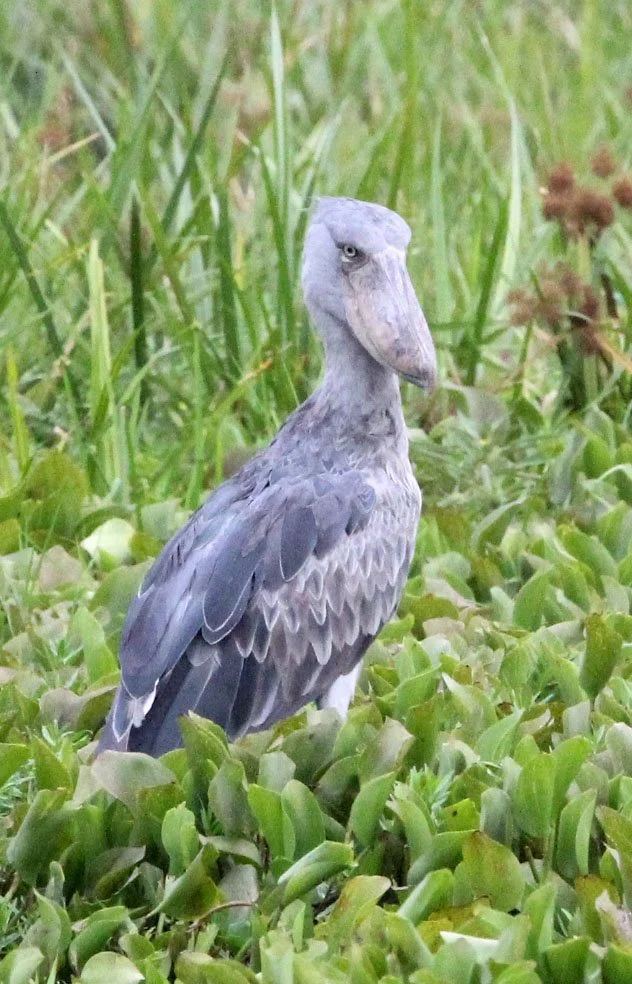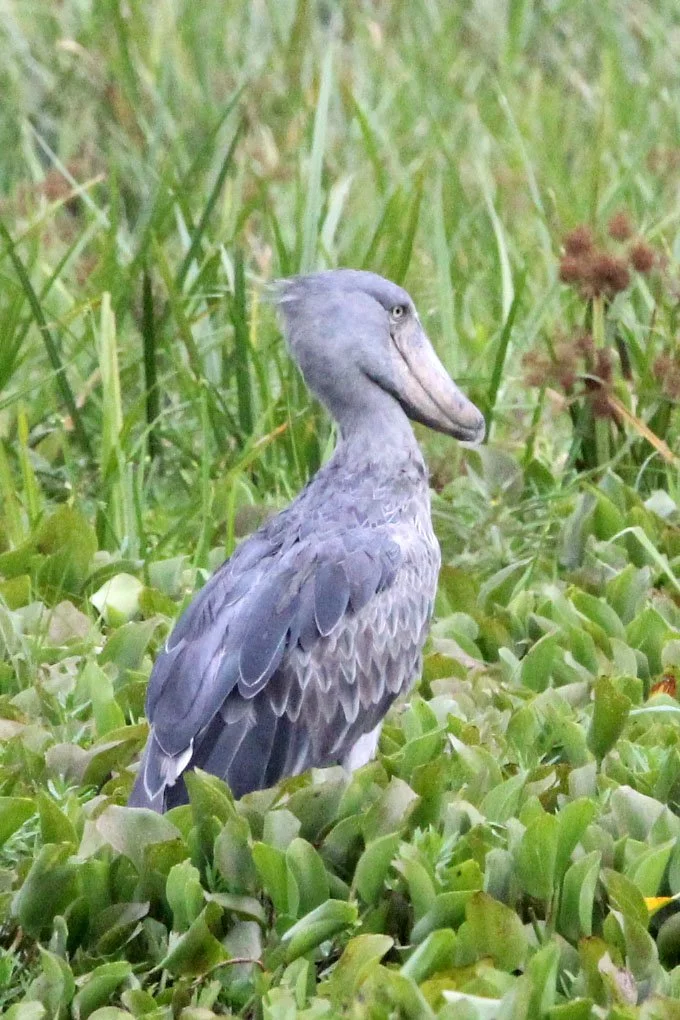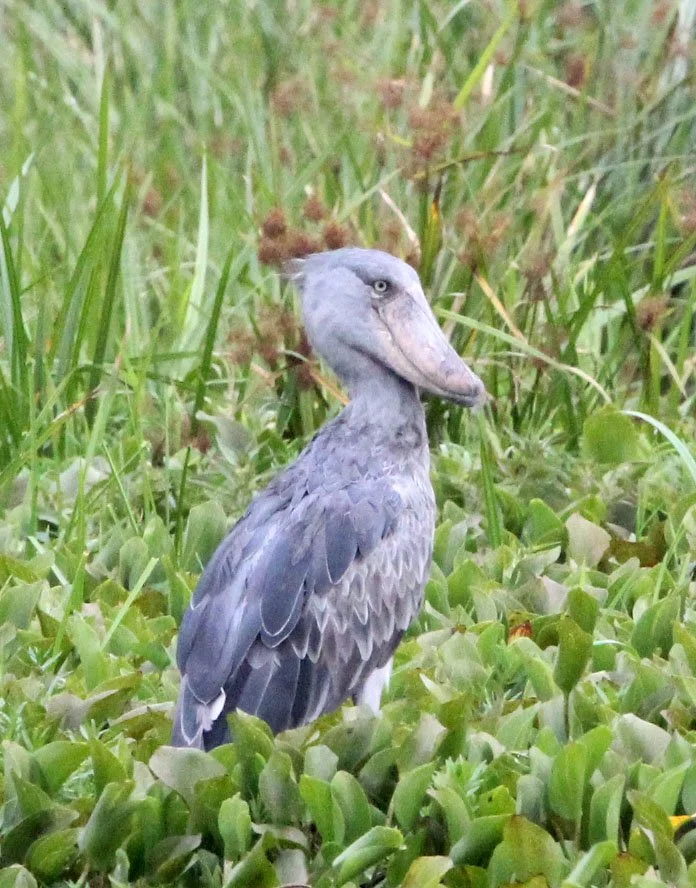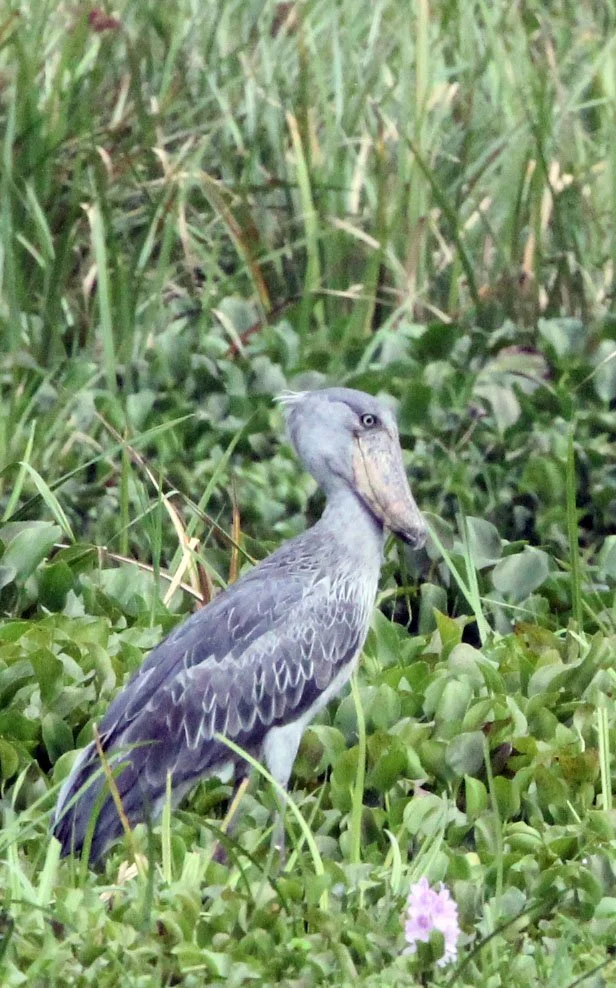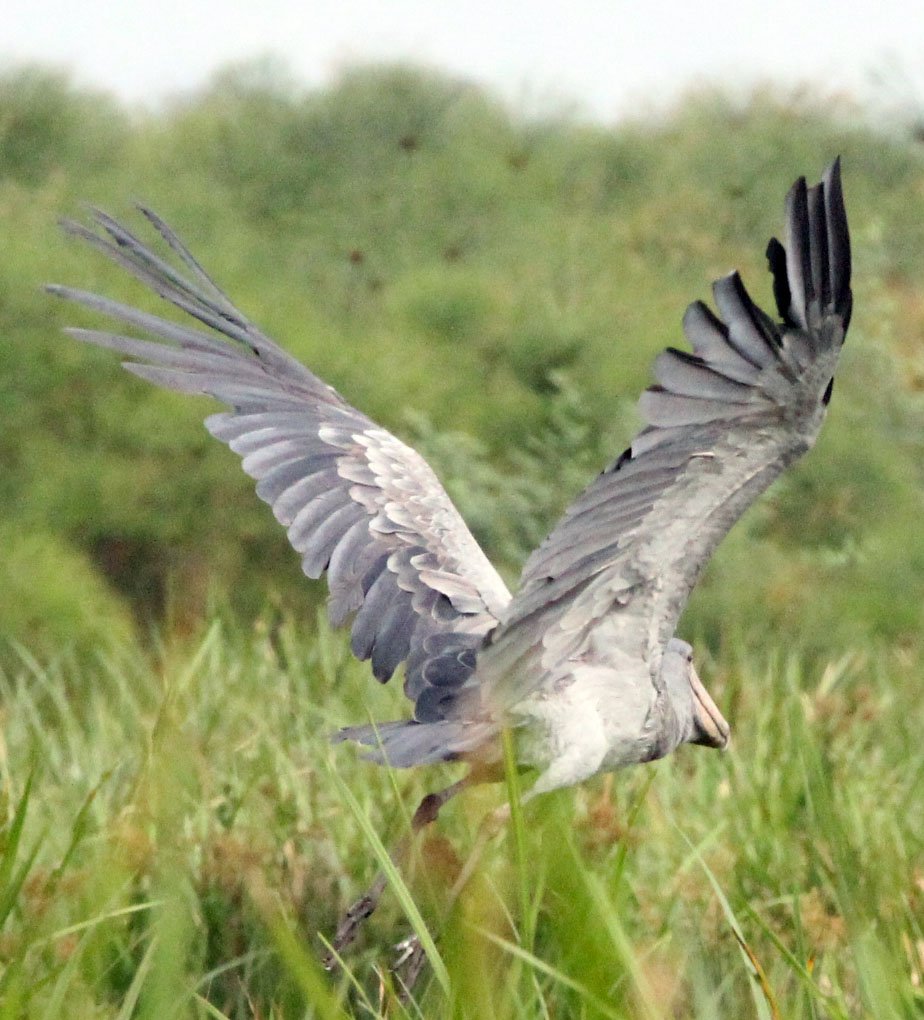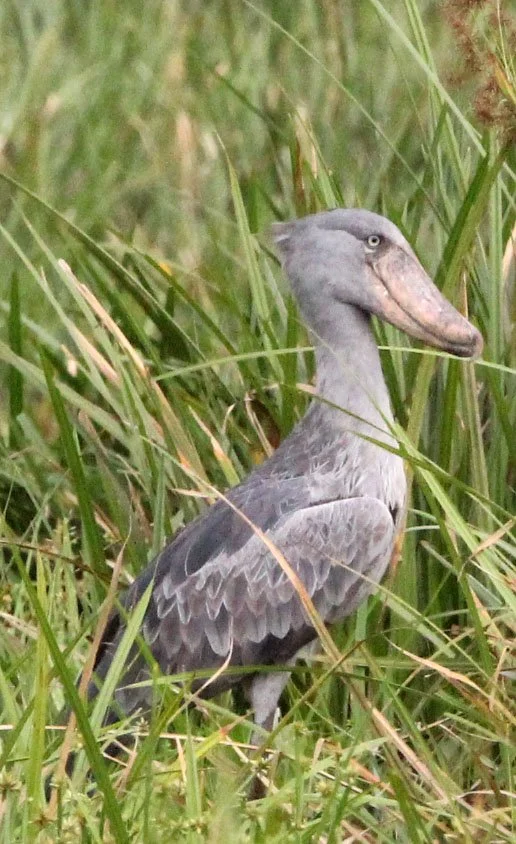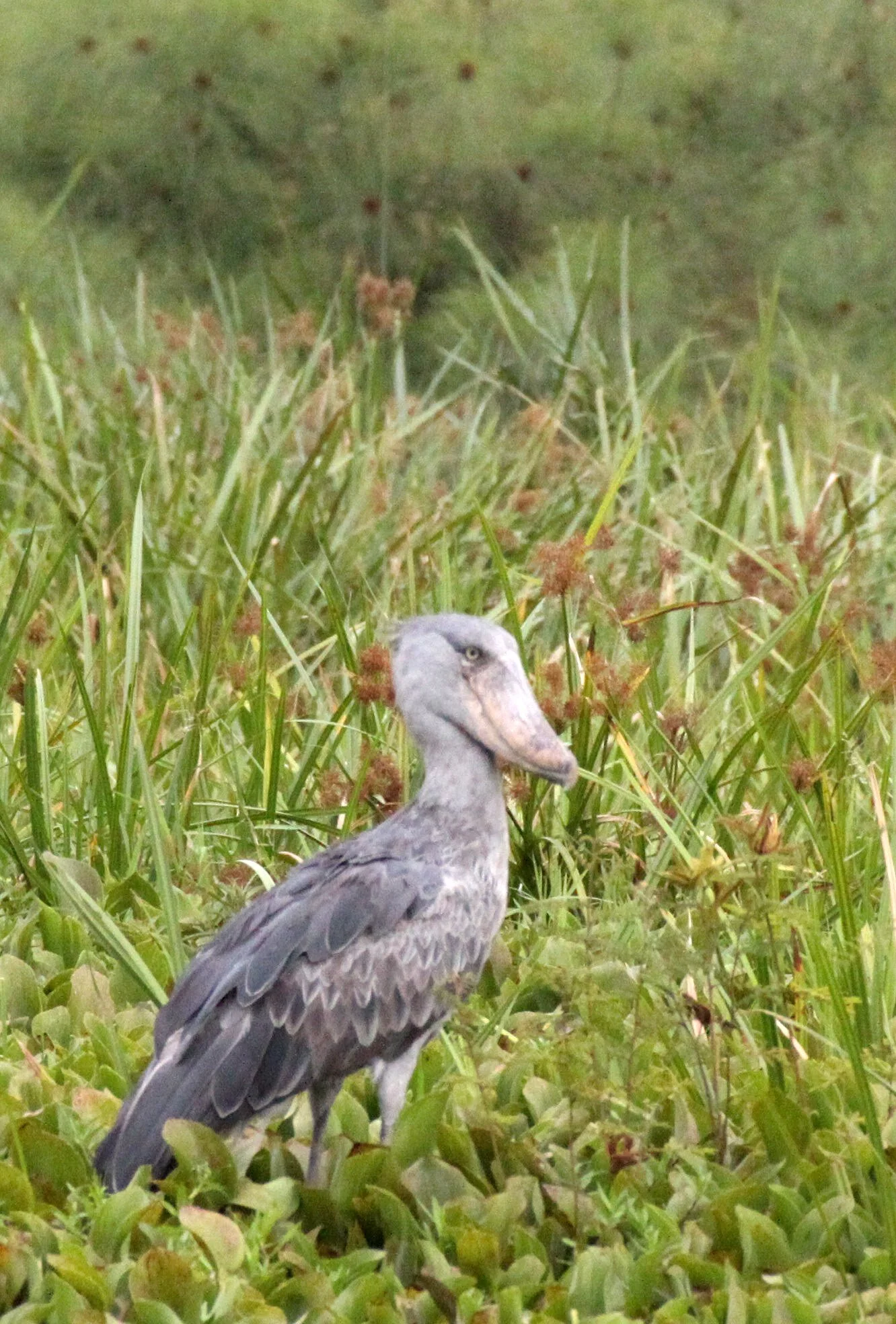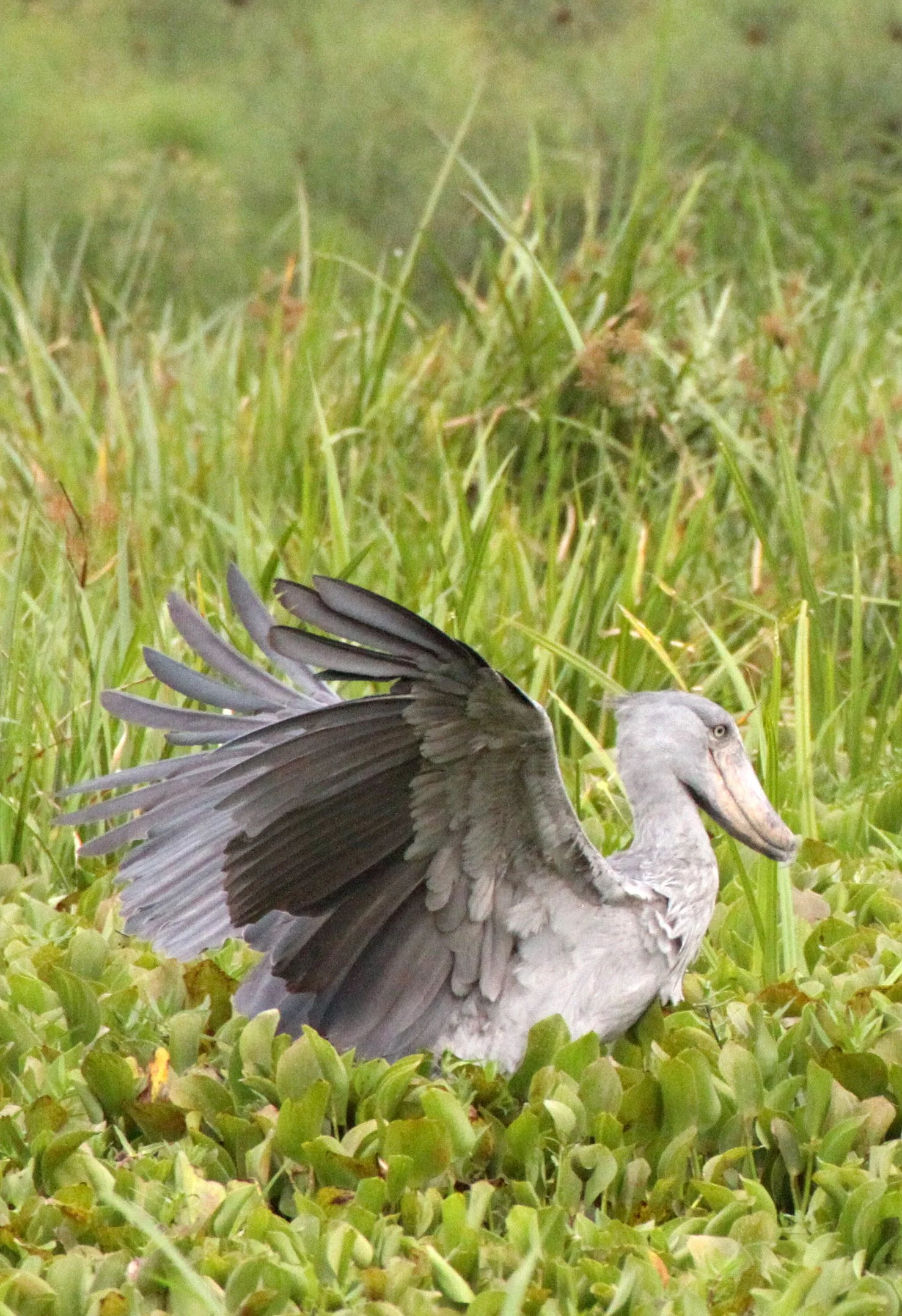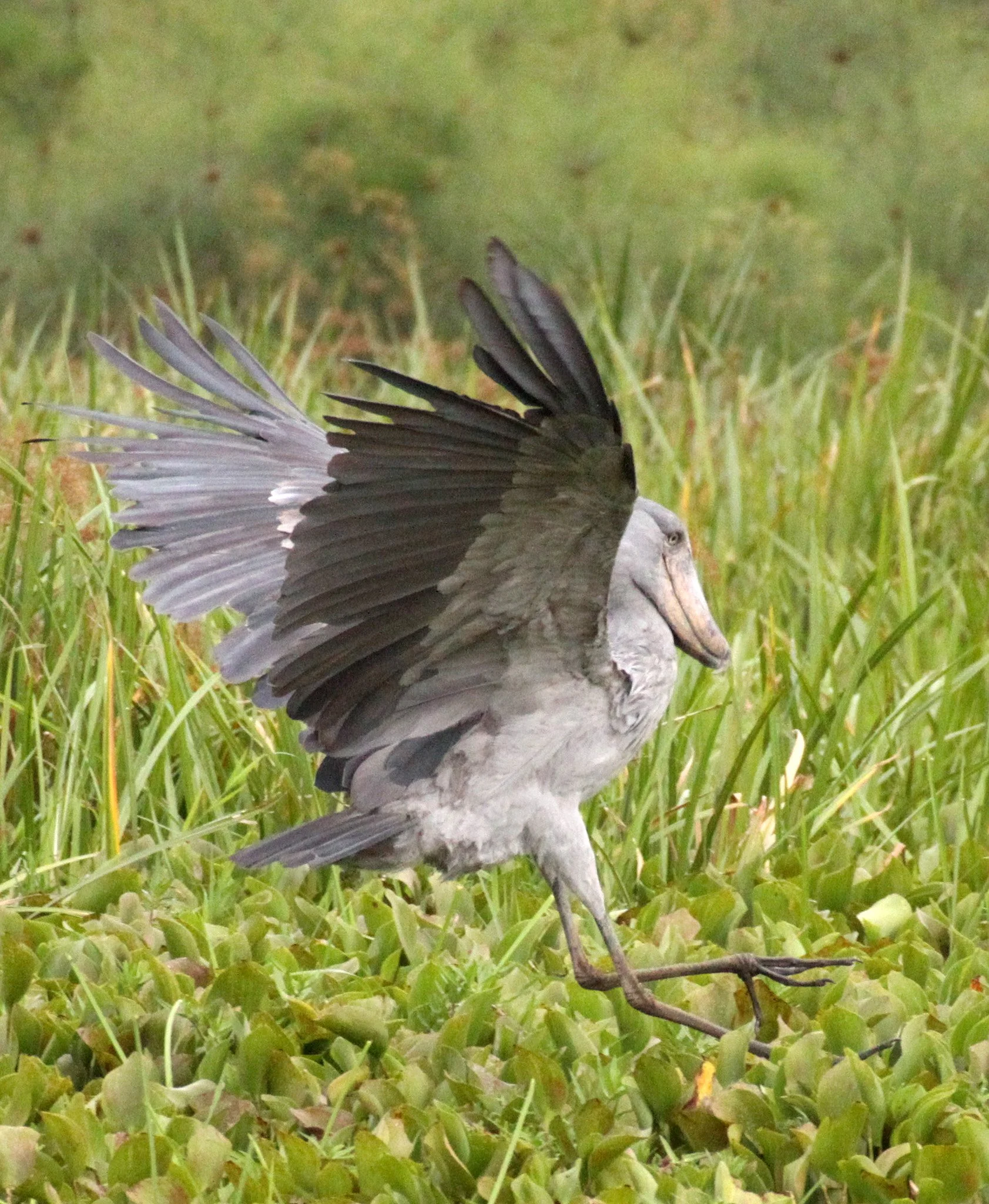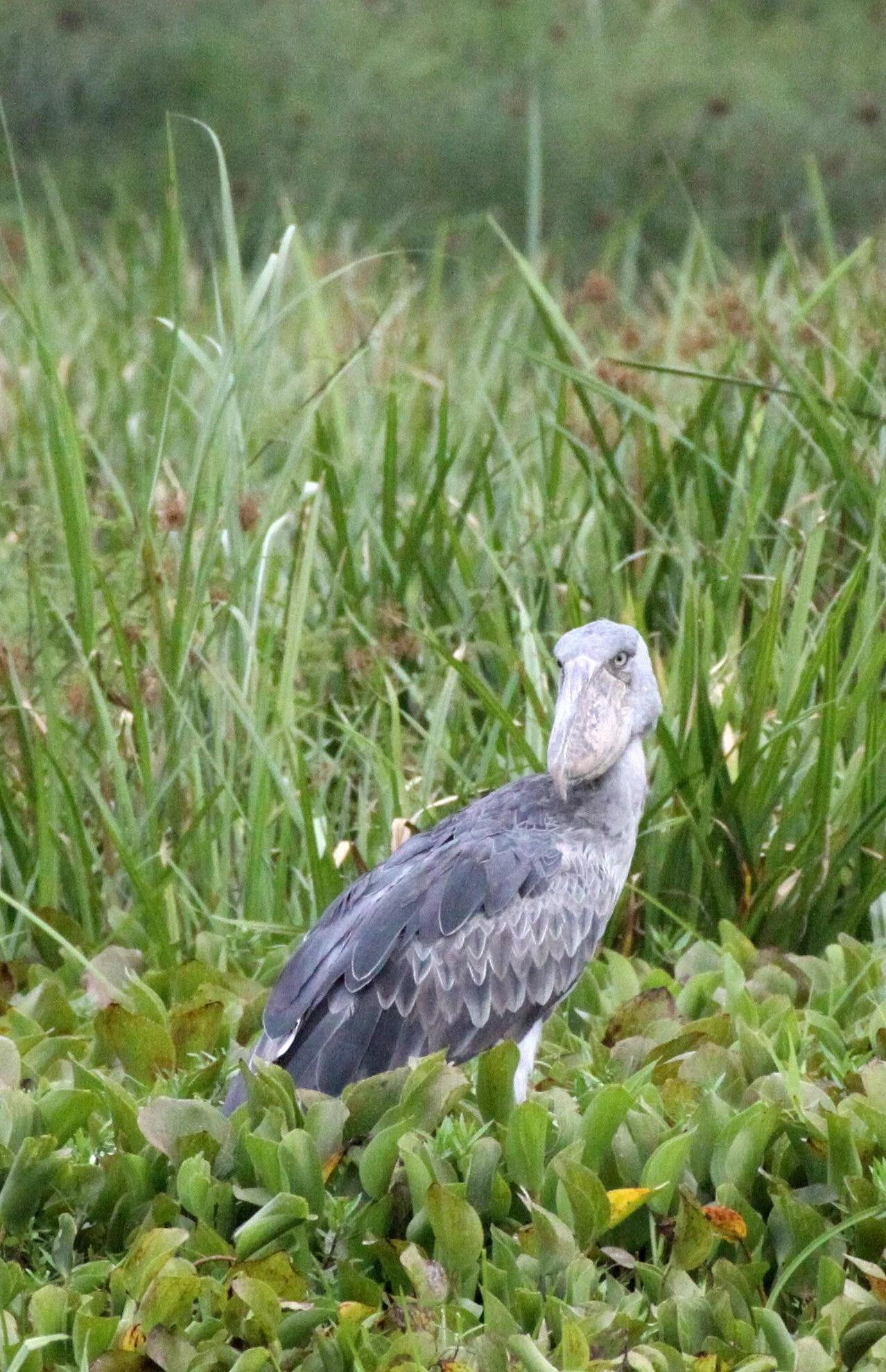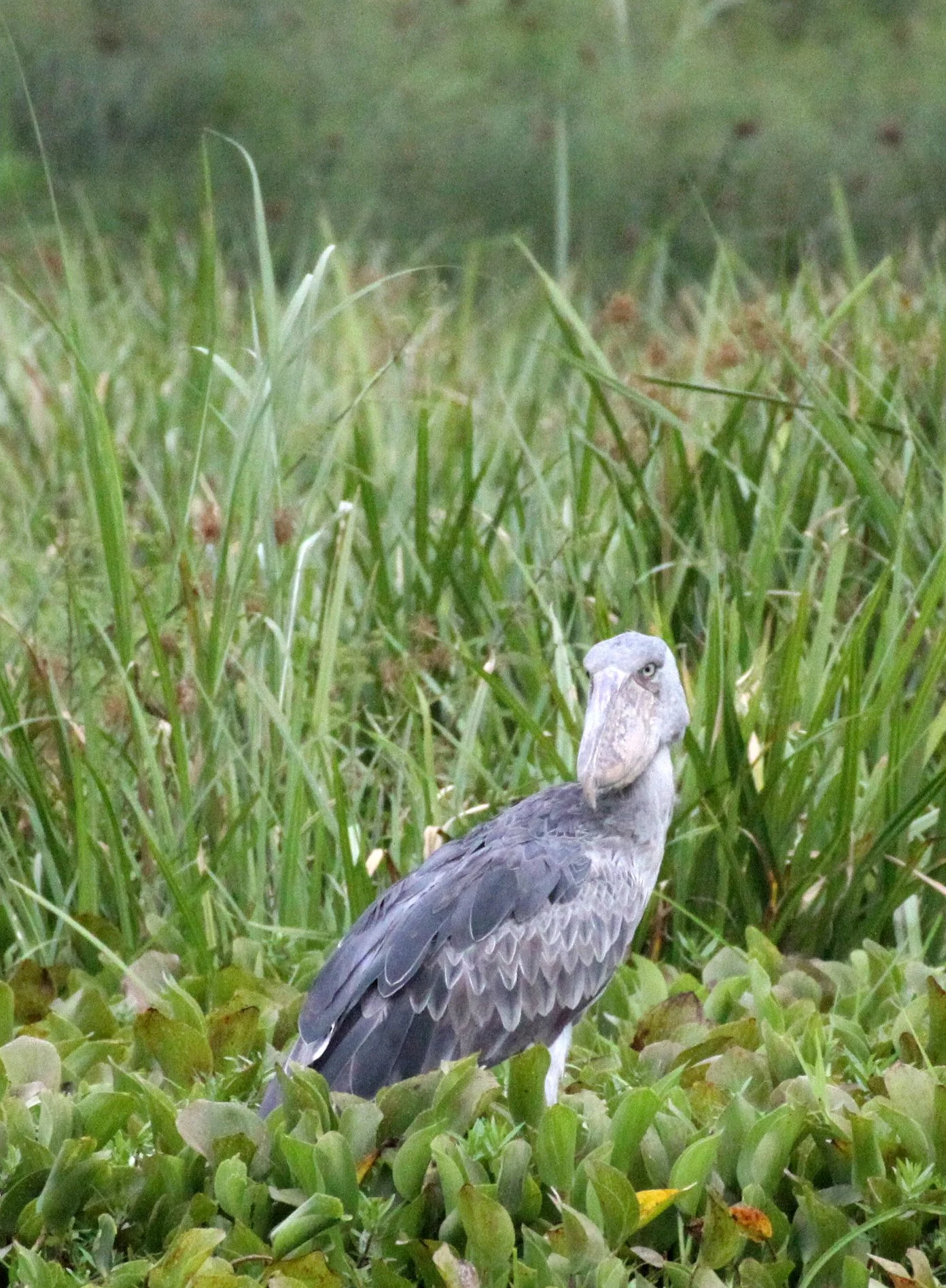
Shoebill (Balaeniceps rex)
The Shoebill (Balaeniceps rex) also known as the whalebill, whale-headed stork or shoe-billed stork, is a very large long-legged wading bird. It derives its name from its enormous shoe-shaped bill. It has a somewhat stork-like overall form and has previously been classified with the storks in the order Ciconiiformes based on this morphology. The Shoebill is the only species in the family Balaenicipitidae, inorder Pelecaniformes, although it was traditionally placed in Ciconiiformes. The shoebill is the sole extant species and its closest relative is the hamerkop (Scopus umbretta), which belongs to another family. However, genetic evidence places it with pelicans and herons in the Pelecaniformes. The adult is mainly grey while the juveniles are more brown. It lives in tropical East Africa in large swamps from South Sudan to Zambia.
Shoebill seen at Murchison Falls National Park, Uganda
Traditionally considered as allied with the storks (Ciconiiformes), it was retained there in the Sibley-Ahlquist taxonomy which lumped a massive number of unrelated taxa into their "Ciconiiformes". Based on osteological evidence, the suggestion of a pelecaniform affinity was made in 1957 by Patricia Cottam. Microscopic analysis of eggshell structure by Konstantin Mikhailov in 1995 found that the eggshells of shoebills closely resembled those of other Pelecaniformes in having a covering of thick microglobular material over the crystalline shells. In 2003, the shoebill was again suggested as closer to the pelicans (based on anatomical comparisons) or the herons (based on biochemical evidence). A 2008 DNA study reinforces their membership of the Pelecaniformes.
The shoebill is distributed in freshwater swamps of central tropical Africa, from southern Sudan and South Sudan through parts of eastern Congo, Rwanda, Uganda, western Tanzania and northern Zambia. The species is most numerous in the West Nile sub-region and South Sudan (especially the Sudd, a main stronghold for the species); it is also significant in wetlands of Uganda and western Tanzania. More isolated records have been reported of shoebills in Kenya, the Central African Republic, northern Cameroon, south-western Ethiopia, Malawi. Vagrant strays to the Okavango Basin, Botswana and the upper Congo River have also been sighted. The distribution of this species seems to largely coincide with that of papyrus and lungfish. They are often found in areas of flood plain interspersed with undisturbed papyrus and reedbeds. When shoebill storks are in an area with deep water, a bed of floating vegetation is a requirement. They are also found where there is poorly oxygenated water. This causes the fish living in the water to surface for air more often, increasing the likelihood a shoebill stork will successfully capture it. The shoebill is non-migratory with limited seasonal movements due to habitat changes, food availability and disturbance by humans.
Petroglyphs from Oued Djerat, eastern Algeria, show that the shoebill occurred during the Early Holocene much more to the north, in the wetlands that covered the present-day Sahara Desert at that time.
The shoebill occurs in extensive, dense freshwater marshes. Almost all wetlands that attract the species have undisturbed Cyperus papyrus and reed beds of Phragmites and Typha. Although their distribution largely seems to correspond with the distribution of papyrus in central Africa, the species seems to avoid pure papyrus swamps and is often attracted to areas with mixed vegetation. More rarely, the species has been seen foraging in rice fields and flooded plantations.
The population is estimated at between 5,000 and 8,000 individuals, the majority of which live in swamps in South Sudan, Uganda, eastern Democratic Republic of the Congo, and Zambia. There is also a viable population in the Malagarasi wetlands in Tanzania.[30] BirdLife International has classified it as Vulnerable with the main threats being habitat destruction, disturbance and hunting. The bird is listed under Appendix II of the Convention on International Trade in Endangered Species of Wild Fauna and Flora (CITES). Habitat destruction and degradation, hunting, disturbance and illegal capture are all contributing factors to the decline of this species. Agriculture cultivation and pasture for cattle have also caused significant habitat loss. Indigenous communities that surround Shoebill habitats capture their eggs and chicks for human consumption and for trade. Frequent fires in southern Sudan and deliberate fires for grazing access contribute to habitat loss. Lastly, swamps in Sudan are being drained for construction of a nearby canal that allows for artificial control of nearby waterways.


